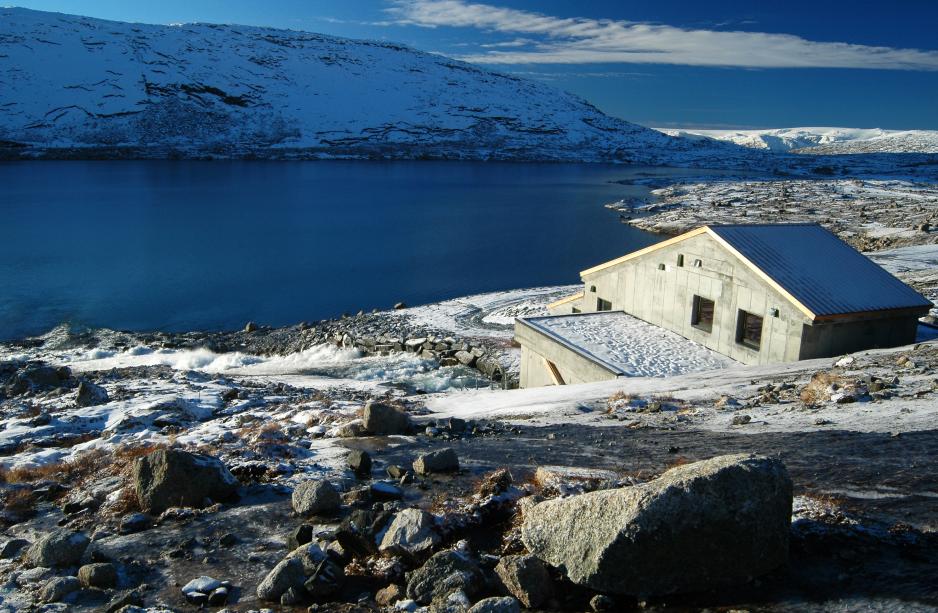Renewable Energy Production in the Norwegian Arctic: An Energy Boost for Europe?

As initially anticipated, the “Arctic region” only played a limited role during the actual negotiations of the recently adopted Paris Agreement. However, although the Arctic went almost entirely unmentioned during the negotiation process, the region and its climate change related challenges were extensively addressed in a broad variety of side events and seminars in the course of the 21st Conference of the Parties (COP 21) of the United Nations Framework Convention on Climate Change, held in Paris from 30 November to 12 December 2015.
One of these many Arctic-related side events was organised by the Bellona Foundation, an international environmental non-governmental organization based in Oslo.
At the event on 5 December 2015, the President of the Foundation, Frederic Hauge, and the Norwegian Minister of Foreign Affairs, Børge Brende, launched the Foundation’s most recent Arctic-related report, entitled “Environmental Considerations in the Arctic: Sustainable resource exploitation”.
From hydrocarbons to renewables?
The report starts from the premise that economic and related human activity will only increase in the Arctic region in the years and decades to come. However, with the Arctic’s hydrocarbon resources (currently) being economically side-lined, the report focuses on three different industries that are rather highly likely to increase: renewable energy production in the Norwegian Arctic and the Murmansk region, integrated multi-trophic aquaculture and Arctic mining.
Similarly, and only a couple of weeks earlier in November 2015, Norway’s former Minister of Foreign Affairs and current Labour Party leader, Jonas Gahr Støre, amplified his new vision for the Norwegian Arctic as a region of renewable energy opportunities. A national Arctic future that is not per se dominated by oil and gas prospects and explorations in Norway’s Arctic waters but rather by the riches in and of the ocean itself.
Accordingly, the (economic) future of the Norwegian, and in a wider sense, European Arctic is anticipated to be one of sustainable business methods and solutions. With an already renewables-produced aggregated power surplus of around 5 TWh (terawatt-hours), Northern Norway – Norway’s three Northern counties Finnmark, Nordland and Troms – hold substantial opportunities for ‘green growth’, with renewables able to become the engine for new, long-term economic opportunities in the region. In that regard, the Bellona report explicitly highlights Arctic datacentres, eco-tourism and the hydrogen industry as green growth jokers in Northern Norway that could eventually profit from the referred-to energy opportunities.
Norway: Europe’s Green Battery?
And yet, the renewable energy prospects in the Norwegian Arctic could not only be beneficial to (Northern) Norway only but could also have positive effects for the European continent. As explained by the report, the theoretical potentials from hydro, onshore/offshore wind, tidal and even solar power are enormous. Hydropower already accounts for 96-99% of the total Norwegian energy production with the Scandinavian country being the sixth largest hydroelectric power producer, able to look back on a century-long history of related energy production. In comparison, within the EU-28 hydropower contributed 16,6% of the total renewable energy mix in 2013.
The vast system of already existing Norwegian hydroelectric plants – a total of currently 937 – could provide Europe with a substantial amount of energy storage.
Back in 2013, CICERO’S Senior Researcher Anne Therese Gullberg emphasised Norway’s great potential for producing pumped-storage hydropower, able to help the European Union’s transition to a renewable energy system by serving as a technically feasible “green battery”. Accordingly, and as further outlined by Idun Haugan, excess power from Europe could be sent to Norway to pump water from lower to higher reservoirs.
Once power is needed in Europe, the water from the higher reservoirs will be released, rushes through the hydropower turbines, generates electricity and could be send back to wherever it is finally needed. Similarly, also the Center for Environmental Design of Renewable Energy (CEDREN) recently developed a so-called “big storage” scenario that sees “Norwegian hydropower play[ing] an important role in integrating variable renewable sources into the European power system by providing large volumes of balancing over various time horizons to the North Sea Countries through highly integrated grids and power markets.”
A long-term endeavour only
However, despite undoubtedly existing potentials, an eventual, even long-term, realization faces several problems. From a Norwegian Arctic perspective, the Bellona report concluded that regional market conditions and practical obstacles, such as area conflicts or the lack of grid connections, limit any further developments in the short and medium term. An extended and enhanced grid capacity, including an integrated Arctic grid as exemplified by the Arctic Circle Grid Initiative, is a prerequisite for new, renewable activities; an extension that is, nevertheless currently not strongly pursued in Norway, as recently highlighted by an article in Greentech Media.
From an international perspective, the currently existing system of high-voltage, direct current (HVDC) interconnectors between Norway and the continent also need to be extended to eventually maximize Norway’s storage potential. As a matter of fact, two additional interconnectors, the Nord.Link between Norway and Germany and the NSN Link between Norway and the UK will become operational until 2020. However, more are needed.
With the theoretical potential of renewable resources in the Norwegian Arctic being assessed as enormous and the region already producing a power surplus, (regional) opportunities for green growth undoubtedly exist. Yet, an essential question remains that has already been asked in other (economic) Arctic-circumstances before: will the potentials/resources eventually be tapped? And if the resources are tapped will they also have an impact on the European continent? Moreover, are the European Union and its Member States willing to do their (financial) bits? The global promises at COP 21 were high; it will be interesting to observe which way a regional, renewable pendulum will finally swing.
